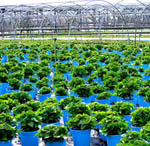Restoring river flows: a downscaled approach
 Freshwater,
Freshwater,  Restoration
Restoration  Span of the Bridge River. Image credit, Chilcotin Holidays.A large percentage of the world's rivers have undergone some sort of flow restriction such as damming which has in turn transformed the ecological communities of many of these ecosystems. And while many of us would love to see the natural flows restored to many of these rivers, the reality is that this is not practical and it's unlikely to occur.
Span of the Bridge River. Image credit, Chilcotin Holidays.A large percentage of the world's rivers have undergone some sort of flow restriction such as damming which has in turn transformed the ecological communities of many of these ecosystems. And while many of us would love to see the natural flows restored to many of these rivers, the reality is that this is not practical and it's unlikely to occur.
But a new study supports the use of an alternative approach that entails restoring lower levels of flow that follow seasonal patterns. The idea is that even though the flow is much lower than pre-dam levels, it can still benefit aquatic and riparian habitat.
Researchers looked at the unique case of the Bridge River in British Columbia where damming in 1948 had cut off flow for a half a century. In 2000, as a result of litigation, BC Hydro, the agency that owns and operates the dam, initiated a test project in which they attempted to deliver a downscaled flow regime that partly mimicked the natural snowmelt-dominated pattern. The downscaled flow extended through 2007 with a mean discharge of 3 cubic meters (compared to 100 cubic meters prior to damming). The researchers studied how this new downscaled flow regime affected the establishment and growth of black cottonwoods (Populus trichocarpa) the dominant riparian trees in the area.
Study Results
- The increased flows did not have a statistically significant effect on the growth rates of mature conttonwoods. The researchers speculate that their survival during the interval of river dewatering and their lack of response to the experimental flows probably both reflect access to an alternate water source that was independent from the Bridge River (e.g. groundwater flow from the mountainsides).
- However, growth rates of juvenile cottonwoods displayed significant growth promotion following the initiation of the experimental flows. The researchers expected this given that juvenile trees have less extensive root systems for obtaining moisture from alternate sources
- Juvenile saplings occurred at lower elevations in narrow bands close to the river indicating that the spatial scale of the response reflects the magnitude of the flow regime.
- The results from another study have shown that the downscaled flow regime has also benefited the aquatic ecosystem, with rapid responses in periphyton, invertebrates, and salmon.
Implications for conservation practices...
Based on these results the study authors draw the following conclusions:
- Although aquatic and riparian organisms are adapted to the natural river flow regime, it is not practical to fully restore natural flows along most dammed rivers.
- We propose that an alternate management strategy would deliver downscaled flow regimes that mimic the natural seasonal pattern.
- This appropriate hydrologic pattern would satisfy the life history requirements of riverine organisms and promote ecological function, but the downscaled regime would produce a proportionally smaller system.
- Following this successful case study, we recommend the consideration of downscaled seasonal flow regimes as a global strategy for ecological restoration along dammed rivers.
--Reviewed by Rob Goldstein
Hall, A., Rood, S., & Higgins, P. (2009). Resizing a River: A Downscaled, Seasonal Flow Regime Promotes Riparian Restoration Restoration Ecology DOI: 10.1111/j.1526-100X.2009.00581.x




Reader Comments